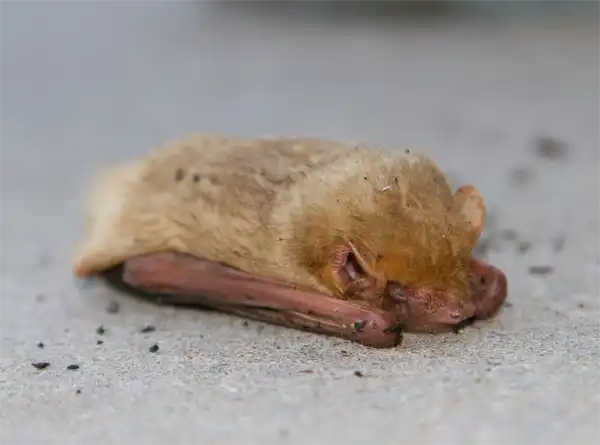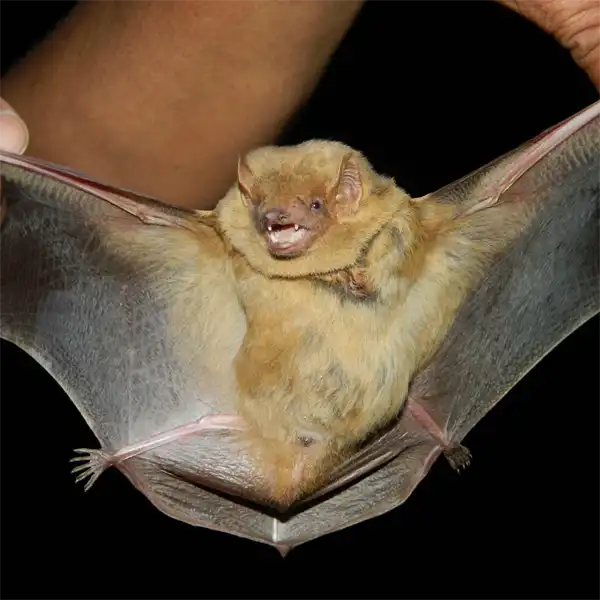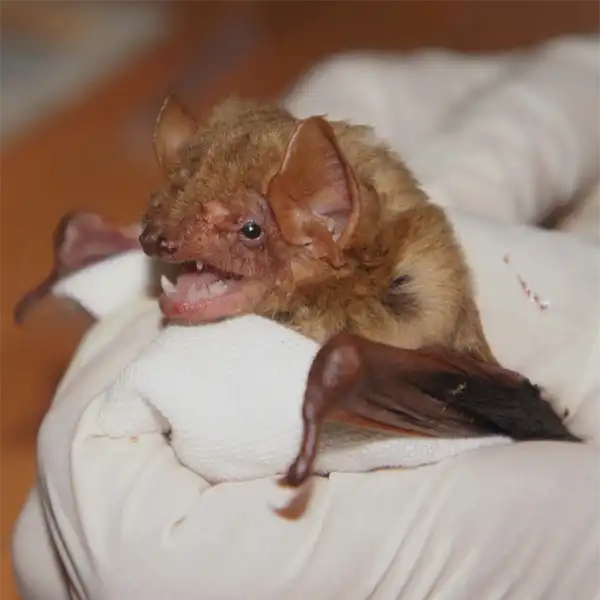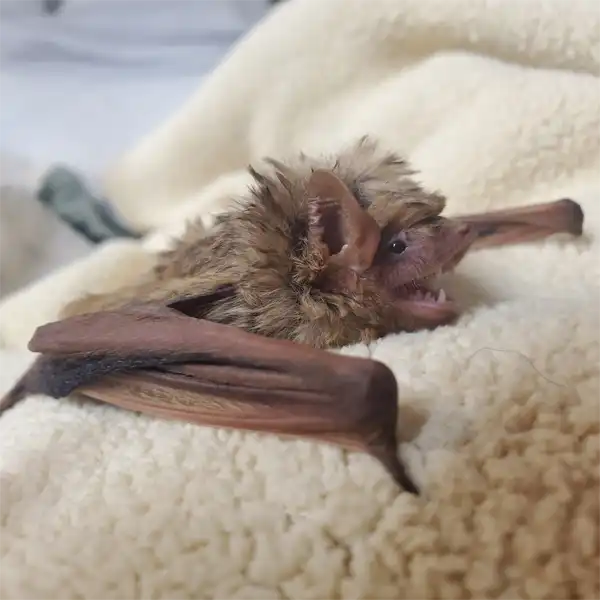Northern Yellow Bat
- Scientific Name
- Lasiurus intermedius
- Also Known As
- Northern Yellow Bat
- Range
- All of Florida
- Diet
- True Bugs, Flies, Mosquitoes, Beetles
- Life Expectancy
- 5 - 10 Years
Quick Links
The Northern Yellow Bat in Central Florida
The northern yellow bat (Lasiurus intermedius) is a small, migratory bat species found across the southeastern United States, including central Florida. This comprehensive guide provides detailed identification tips, biology facts, and information on ideal habitat conditions and prevention of conflicts with the northern yellow bat in central Florida.
Appearance and Identification
The northern yellow bat can be identified by the following unique physical characteristics in both juvenile and adult stages
Maturation Rate
Northern yellow bat pups grow rapidly after birth. They reach full adult size by 20-30 days old. Sexual maturity is reached by 6-12 months old in females and 1.5 years old in males. The young bats are independent and capable of migration by late summer.
Habits and Behavior
The northern yellow bat is migratory, traveling south to Florida in winter from more northern roosts. They arrive in Florida around September and stay until April or May. While in central Florida, they roost solitarily in Spanish moss, palm fronds, and leaves. They use different day roosts on a regular basis.
Northern yellow bats emerge at dusk to forage around trees and bushes for insects. They have a rapid, erratic flight pattern as they pursue prey, aided by echolocation. This species eats a variety of flying insects like moths, beetles, mosquitoes, and termites.
Reproduction and Lifespan
Mating occurs in autumn before migration south. Females store sperm during hibernation until spring, when ovulation and fertilization occurs. The single pup is born in May or June, either in the southern roosts or after returning north. Pups are weaned by 25-30 days old.
Lifespans in the wild are estimated between 5-10 years. The northern yellow bat has a relatively slow reproductive rate for bats, with females producing just one pup annually. Their migratory habits reduce exposure to predators compared to non-migratory bats.
Ideal Habitat and Range
Central Florida’s humid subtropical climate provides excellent winter habitat for northern yellow bats. Average temperatures range from the mid 60s°F (16-19°C) in North Florida to the low 70s°F (21-24°C) in South Florida during winter. Cold fronts occasionally dip temperatures into the 40s°F (4-9°C).
The combination of mild weather and high rainfall allows dense vegetation like cypress swamps, oak hammocks, and palm forests to thrive. These wooded areas provide productive insect populations for the bats to feed on using echolocation among the trees and shrubs.
Day roosts are also abundant, with Spanish moss drapes, palm fronds, and leaves providing concealed shelters. The northern yellow bat’s small size allows it to wedge deep into vegetation, evading larger predators. Central Florida offers ideal winter habitat due to the warm climate, abundant insects, and daytime roosting options.
Diet and Feeding
Northern yellow bats are insectivorous, feeding on a variety of flying insects:
- Moths
- Beetles
- Mosquitoes
- Midges
- Termites
They capture prey while in flight using echolocation. The bats emerge at dusk when insect activity peaks. They forage around treetops and streetlights where many insects congregate. Northern yellow bats play an important role in controlling pest insect populations.

Photo 406445 © Cullen Hanks, CC BY-NC

Common Health Risks
Like most bat species, northern yellow bats can transmit rabies if infected and they bite or scratch someone. However, transmission is extremely rare as they do not usually come into contact with humans. Their small teeth make even bites unlikely to break the skin.
Histoplasmosis is another disease risk if concentrated guano deposits accumulate in roosting sites, which can occur in attics. Spores from the fungus are released and cause lung infections if inhaled. Hence, exclusion and proper cleanup methods are important if roosts are found in structures. Overall, healthy northern yellow bats pose minimal health risks to humans.
Preventing Conflicts with Northern Yellow Bats
The main approach is exclusion through preventing bat access into buildings. Ensure attic vents, roof tiles, chimneys, and openings around pipes or wires are sealed with mesh, foam, or flashing. Caulk, foam, or steel wool can seal minor gaps. Larger entry points may need custom covers installed.
Outdoors, do not disturb day roosts in vegetation. Northern yellow bats utilize different roosts frequently so exclusion is not effective. Their benefits controlling insects outweigh negatives of guano deposits. Public education helps ensure northern yellow bats are regarded as welcome guests to appreciate from a distance rather than pests.
Northern Yellow Bats in Central Florida – Conclusion
In summary, northern yellow bats are unique seasonal visitors to central Florida’s wooded areas. Their migration, insectivorous diet, and use of vegetation as day roosts differentiates them from other bat species. While northern yellow bats pose minimal health risks and help control pest insects, exclusions can prevent problematic encounters if they try to roost in structures. Through appreciation of their important ecological roles, northern yellow bats can be safely enjoyed and conflicts readily avoided in central Florida.







